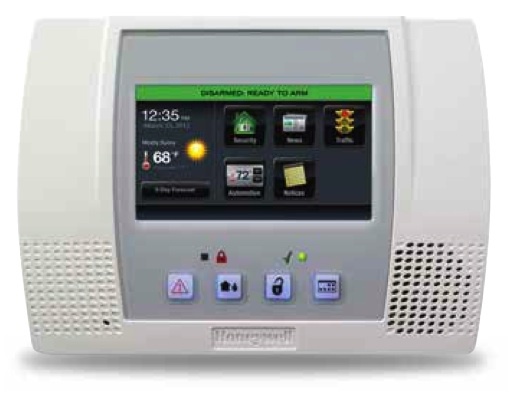Renting an Apartment Doesn't Mean You Can't Have a Security System!
Posted By Joshua UnsethWe hear from apartment renters pretty often wondering if a security system is right for them. One of our goals has been to make sure that anybody and everybody has access to state-of-the-art security, and it's no different for apartment dwellers.
We know that just because you don't own the place where you're living, it doesn't mean that you don't want to protect your property. Thieves don't care whether you own the house or rent it. That's why we've made it simple to setup your system and even simpler to pick it up and move it if you leave your home.
Setting up an apartment security system is easy. So take a look below, we'll explain exactly how we would go about it.

1) Pick the right system: Honeywell's L5100 panel is the best option for any renter looking for a beautiful, but affordable way to get big-home security. The Honeywell Lynx comes with an energy efficient touch screen, and a 95 db speaker built right into the unit. With the help of our Youtube videos, you can figure out how to use almost every single function of the unit with relative ease.
2) Don't wreck the walls: The L5100 is wireless, except for its need for power. While most security systems are mounted on the wall, no one says you have to be conventional. And, since the wall is owned by your landlord, we would hate to have to lose your security deposit because you punched a hole near the door for a security system. So with the help of an LT Cable and a handy dandy desk mount, you don't have to run wire behind the drywall, and the system will look great just sitting on top of your counter.
3) Wireless means no wires, and sticky tape means no holes: Since this system's wireless, you won't have to go into any attics and pull up wire. All you need to do is teach the system about all the different sensors you've installed in your apartment. You do that by typing in the serial number of your various sensors.
3) Even the communication is wireless: The L5100 can connect to the central station using either the phone line, WIFI, an ethernet cord, or over the cell network. While using the phone line or running an ethernet cord will require some wire, using wifi or cellular (GSM) means that you can have the system sit on a counter top, monitor your wireless sensors, and have nothing more than a power wire running from the system to an outlet. The WIFI communication path is the most commonly used pathway by Alarm Grid customers, but the GSM pathway is a little bit more secure (although it costs $10/month more to be monitored over cellular). All you have to do is decide how you want to be monitored. For WIFI, use the L5100-WIFI; for GSM use the GSMVLP5-4G. Installation is as easy as 1-2-3.
Below is the L5100-WIFI Installation Video
Below is the GSMVLP5-4G Installation Video
5) Home automation is for everyone: This system can be equipped with a Z-Wave module. What that means is that even renters can get creative with home automation. Whether you install Honeywell's ZWStat, or use the Leviton's z-wave plug-in outlet so that you can control the lights in your home.
Below is the L5100-ZWave Installation Video
This system will allow any apartment owner to pick up and go when they are ready to leave their home. And the sensors can go too. Whether you move into another apartment or you end up buying a home of your own, this system really is the most modern security system on the market.
